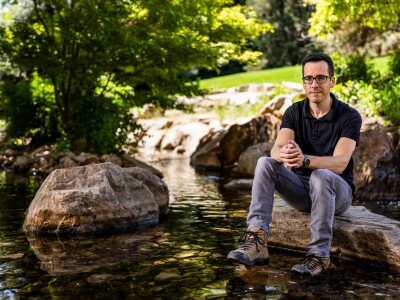Police walking their beat might have faster access to information about a suspect, a crime scene or directions to a location in the not-too-distant future thanks to a team of Brigham Young University industrial design students.
Commissioned by Motorola to design innovative products that will help officers on foot patrol communicate more smoothly in the field, 26 students presented their ideas to Motorola officials Dec. 7 from 1 p.m. to 4:30 p.m. in the student lounge of the Crabtree Technology Building.
Motorola and BYU's department of industrial design, part of the School of Technology, have a long-standing research and design relationship. A similar student project BYU did for Motorola in the 1990s helped hatch the concept behind Motorola's TalkAbout radio, a high-tech version of the walkie-talkie.
As part of the current project, students looked at high-tech trends to anticipate what cops of the future would need to do their job more efficiently, safely and intelligently, said Richard Fry, professor of industrial design and student advisor.
"The beat cop of tomorrow is about 14 years old today," Fry said. "We looked at how the early acceptance of instant messaging and video game controllers has improved or changed the way people communicate."
This anticipatory effort allowed students to let their imaginations run free. Some of the more innovative designs include the "mobile police station," an ATM-like device placed along an officer's beat to give access to communication services, and an emergency "throw" radio that would operate hands free and could be lowered or thrown to a victim during a rescue effort.
Although the students came up with some interesting ideas, Motorola is more interested in the convergence of trends, behaviors, and technologies that will lead to new product categories than they are in a finished product, Fry said.
"They were using the industrial design students as creativity consultants as much as product stylist," said Fry. "It really pushed the students to think less about producing an object and more about behaviors."
Will Motorola use current students' ideas and begin producing law enforcement technologies of the future? It's possible, said Fry.
Whether or not Motorola chooses to use student Tim Huntzinger's plans, he says the designing experience has been worthwhile.
"Working with a real-world client, in this case Morotola, gave me an understanding of what the design experience is actually like – from idea to embodiment."
Writer: Anthony Strike









